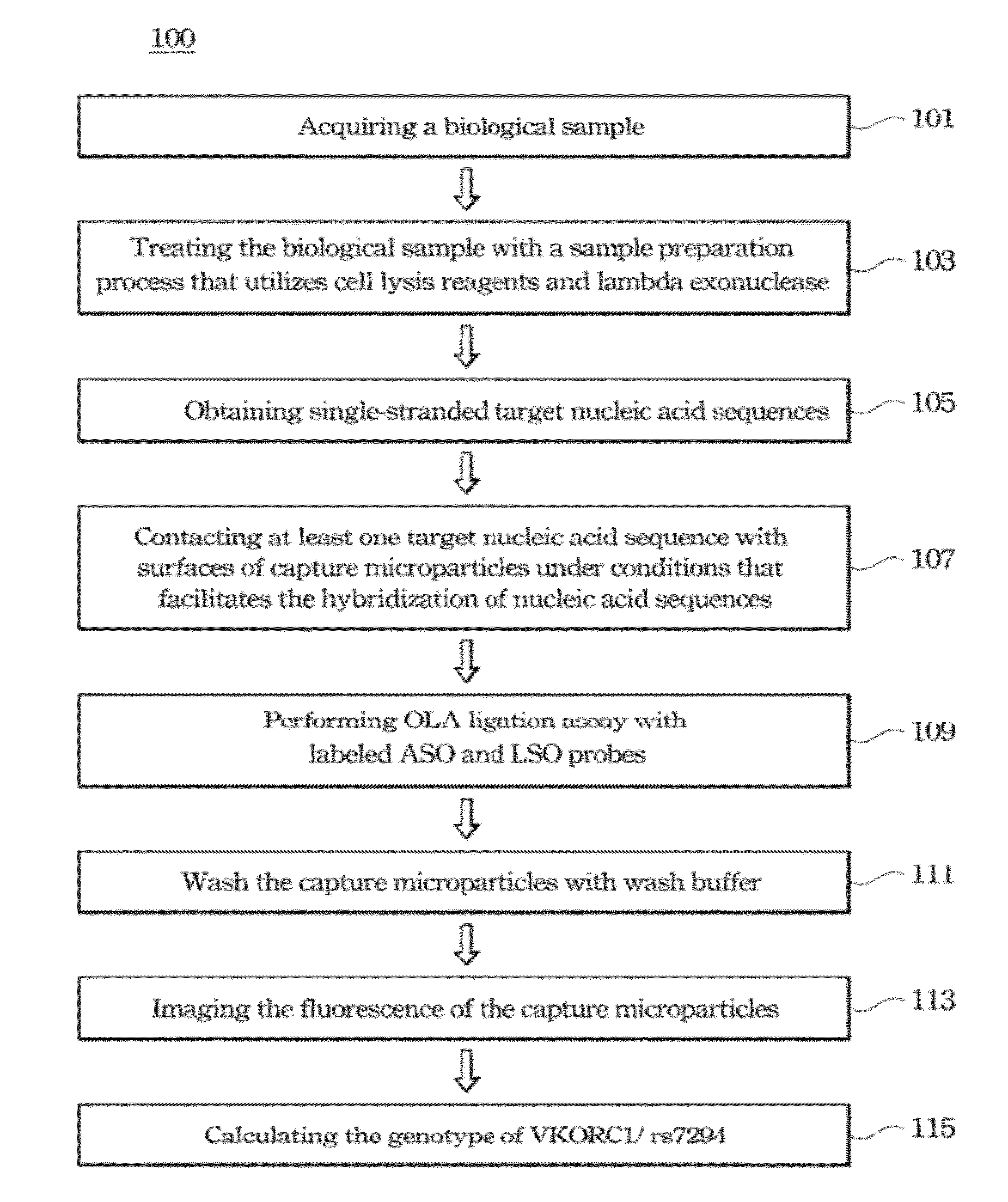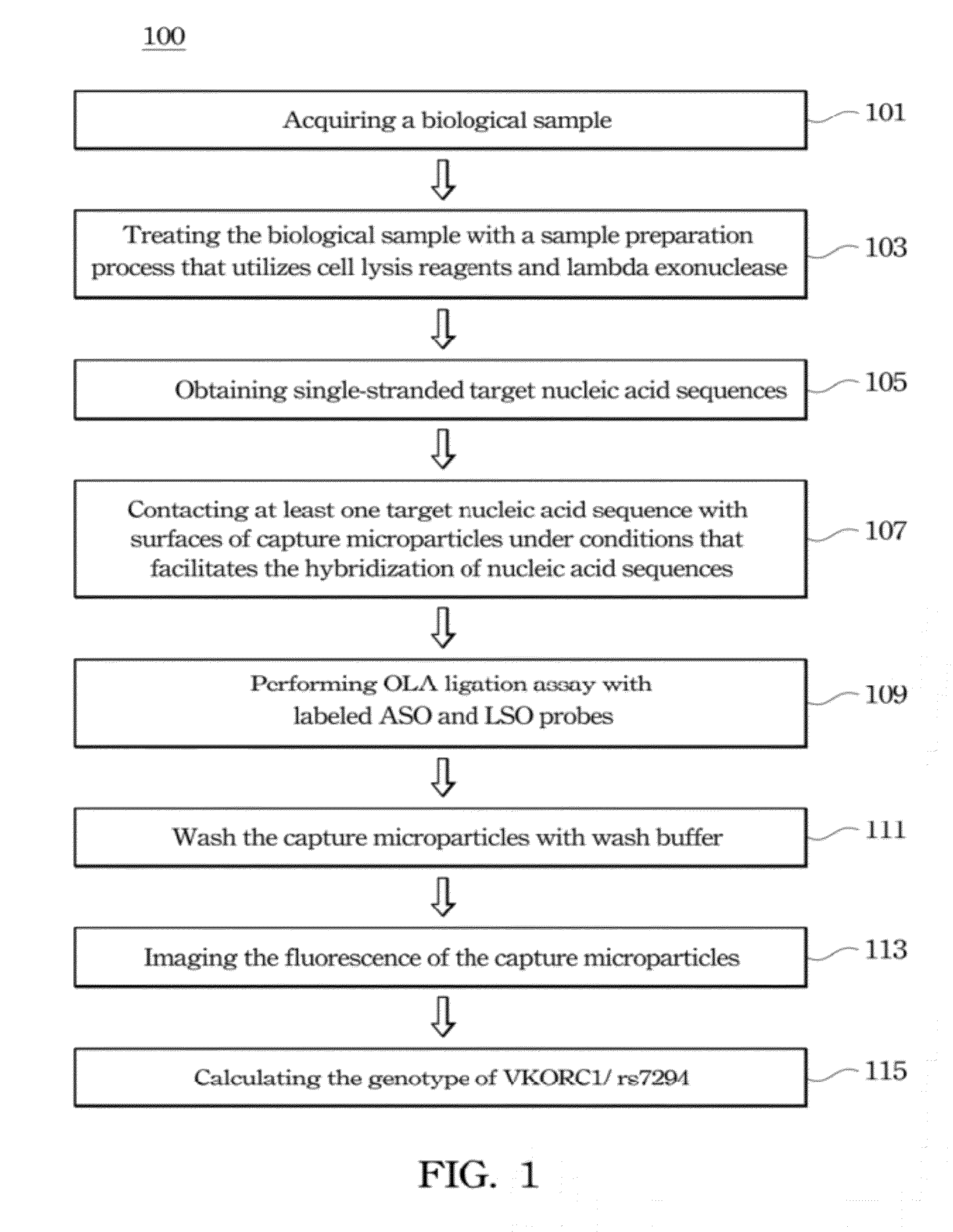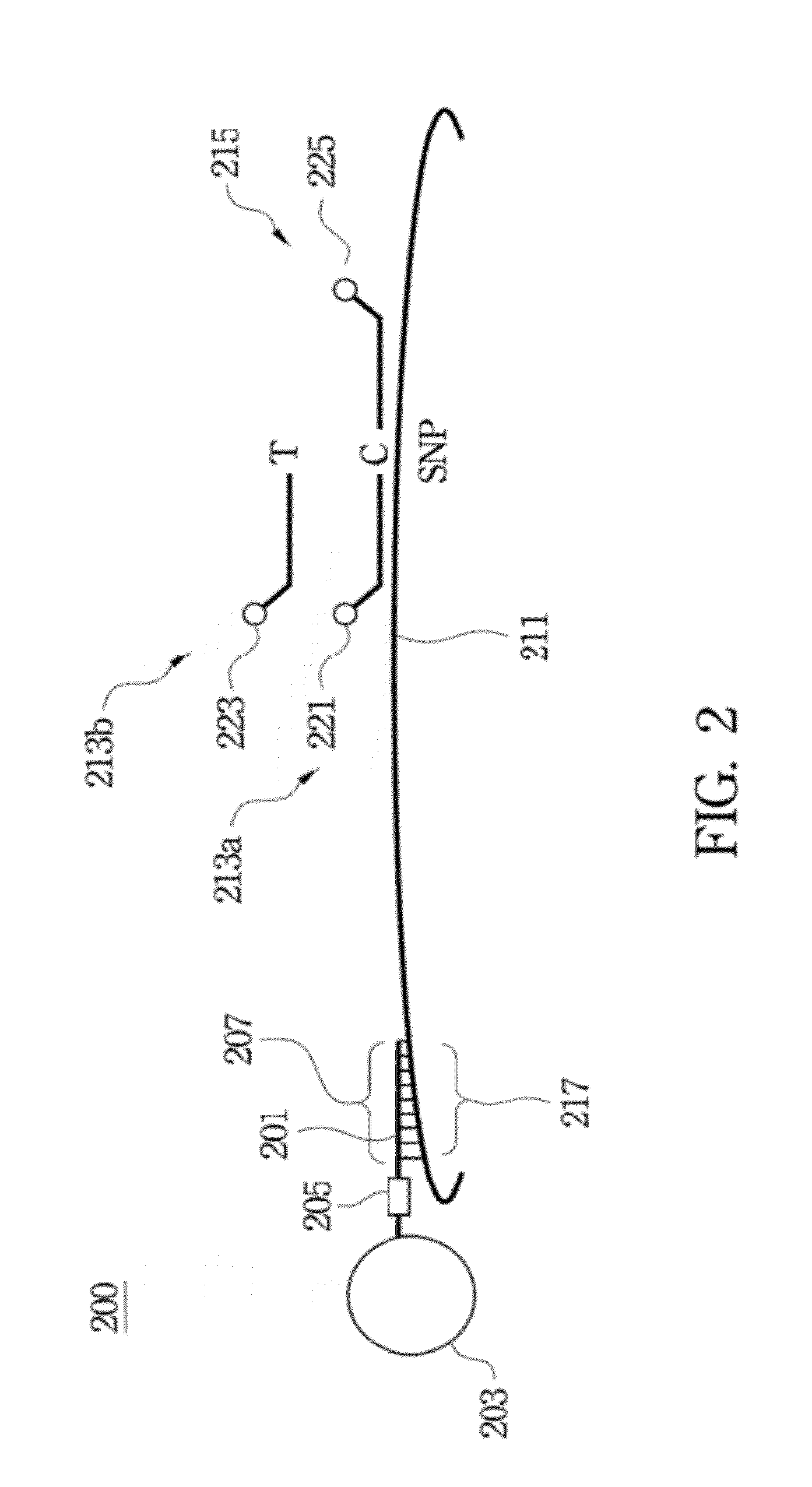Method of analyzing target nucleic acid of biological samples
- Summary
- Abstract
- Description
- Claims
- Application Information
AI Technical Summary
Benefits of technology
Problems solved by technology
Method used
Image
Examples
example 1
SNP Analysis for Personalized Medicine
[0067]Warfarin is the most commonly prescribed anticoagulant for the treatment and prevention of arterial and venous thromboembolism. Warfarin has a narrow therapeutic dosage range for different patients, for which various SNPs, including VKORC1, are known to cause warfarin sensitivity, and account for 35 to 50% of the variability in warfarin dosage requirement. More detailed information about warfarin sensitivity can be found in Chen, et al. “Genetic Variants Predicting Warfarin Sensitivity”, US 2011 / 0236885 A1; which is incorporated by reference. Moreover, FDA approved the updated labeling for warfarin in 2007, which highlights the opportunity for healthcare providers to use genetic tests to improve the initial drug dosage estimate for individual patients (FDA, http: / / www.fda.gov / NewsEvents / Newsroom / PressAnnouncements / 2007 / ucm108967.htm).
[0068]In this example, the locus of VKORC1 / rs7294 was selected as the target nucleic acid sequence for SNP ...
PUM
 Login to View More
Login to View More Abstract
Description
Claims
Application Information
 Login to View More
Login to View More - R&D
- Intellectual Property
- Life Sciences
- Materials
- Tech Scout
- Unparalleled Data Quality
- Higher Quality Content
- 60% Fewer Hallucinations
Browse by: Latest US Patents, China's latest patents, Technical Efficacy Thesaurus, Application Domain, Technology Topic, Popular Technical Reports.
© 2025 PatSnap. All rights reserved.Legal|Privacy policy|Modern Slavery Act Transparency Statement|Sitemap|About US| Contact US: help@patsnap.com



